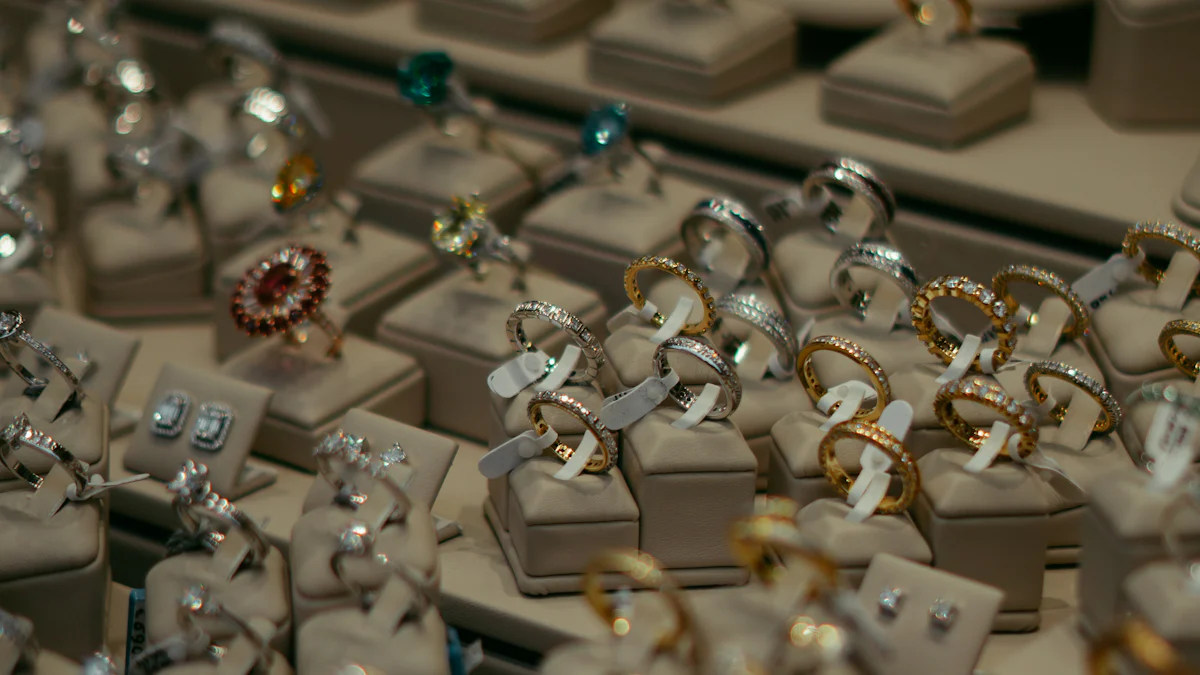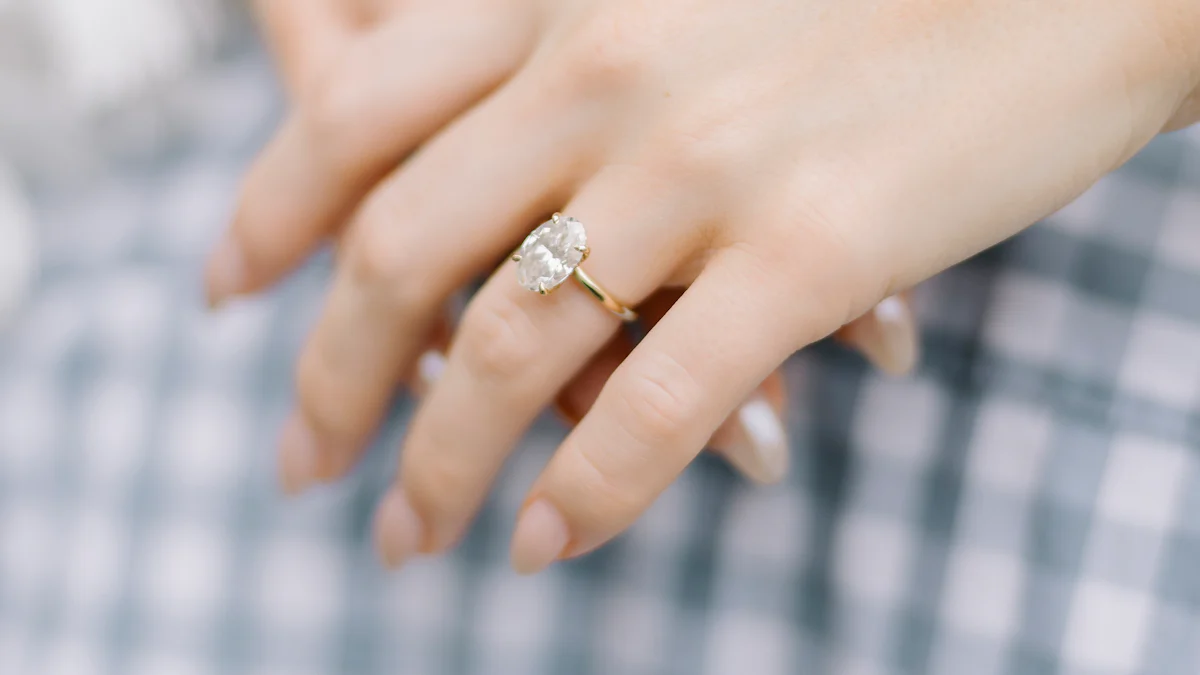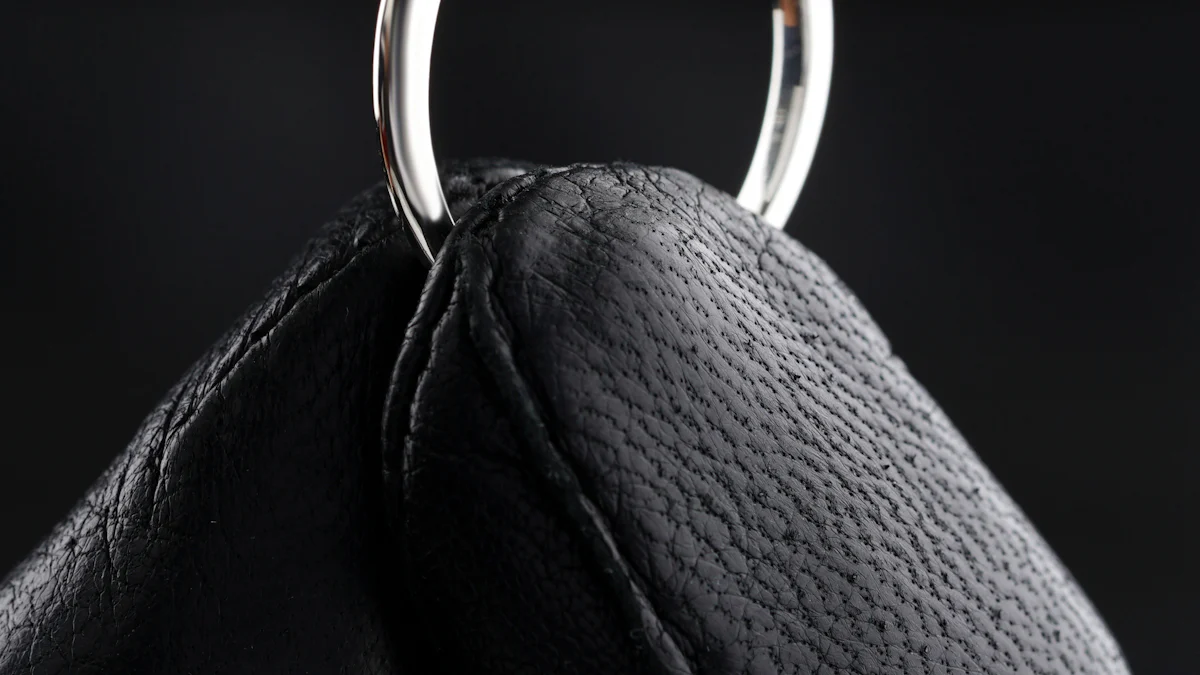Comparing One Carat Diamond Prices Across Retailers

When you shop for a 1 carat diamond, you might notice a wide range of prices. The cost of a one carat diamond can vary significantly, from as low as $1,375 to as high as $12,000. This variation depends on factors like cut, color, clarity, and the retailer's pricing strategy. Understanding these differences is crucial. It helps you make informed decisions and ensures you get the best value for your money. By comparing prices across different retailers, you can find a diamond that fits both your budget and quality expectations.
Understanding the 4Cs and Their Impact on the Cost of a One Carat Diamond

When you shop for a diamond, you often hear about the 4Cs: Cut, Color, Clarity, and Carat. These factors play a crucial role in determining the price of a one carat diamond. Let's explore each of these elements to understand their impact on cost.
Cut
The cut of a diamond significantly influences its brilliance and sparkle. A well-cut diamond reflects light beautifully, making it more desirable. You might find that diamonds with an excellent cut command higher prices. This is because the cut enhances the stone's visual appeal. When you choose a diamond, consider how the cut affects both the appearance and the price.
Color
Color refers to the presence of any hue in a diamond. The less color a diamond has, the more valuable it becomes. Diamonds are graded on a scale from D (colorless) to Z (light color). You will notice that diamonds with lower color grades, such as M, tend to be less expensive. However, they may not have the same visual appeal as higher-grade stones. When selecting a diamond, balance your preference for color with your budget.
Clarity
Clarity measures the presence of internal or external imperfections, known as inclusions and blemishes. Diamonds with fewer imperfections are rarer and, therefore, more expensive. You might see a significant price difference between diamonds with high clarity grades, like VS2, and those with lower grades, such as I1. The clarity grade can affect the diamond's appearance and value, so it's essential to consider how much clarity matters to you.
Understanding the 4Cs helps you make informed decisions when purchasing a one carat diamond. By considering each factor, you can find a diamond that meets your quality expectations and fits within your budget.
Carat
Carat weight is a fundamental factor in determining a diamond's price. You might think that carat refers to the size of the diamond, but it actually measures the diamond's weight. A one carat diamond weighs 200 milligrams. As the carat weight increases, so does the price. However, the price does not increase linearly. Instead, it rises exponentially. This means that a two-carat diamond will cost more than twice as much as a one-carat diamond.
When you shop for a diamond, you will notice that even small differences in carat weight can lead to significant price variations. For example, a diamond weighing 0.95 carats might be considerably less expensive than a diamond weighing exactly one carat. This is because diamonds are priced per carat, and reaching a full carat often results in a higher price bracket.
"The price range per carat can be wider. For example, a diamond with very low color and clarity grades (for example, M and I1) might cost slightly less per carat than the price ranges listed above."
When considering carat weight, it's essential to balance your desire for size with your budget. Larger diamonds are more impressive, but they also come with a higher price tag. You might find that opting for a diamond just under a full carat can offer better value without sacrificing much in terms of appearance.
Diamond Price Comparison Across Retailers

When you embark on the journey of purchasing a 1 carat diamond, understanding the diamond prices comparison across different platforms becomes essential. This knowledge helps you make informed decisions and ensures you get the best value for your investment. Let's delve into how online retailers and physical stores differ in their pricing strategies and what factors contribute to these price differences.
Online Retailers
Online platforms have revolutionized the way you shop for loose diamonds. They often offer competitive prices due to lower overhead costs. You can find a wide range of options, from budget-friendly to high-end diamonds. The cost of a one carat diamond online can vary significantly, but you might notice that prices often fall within a more affordable range compared to physical stores. Online retailers provide detailed descriptions and certifications, allowing you to make a well-informed choice. The convenience of browsing through numerous options from the comfort of your home adds to the appeal of online shopping.
Physical Stores
In contrast, physical stores offer a tactile experience that online platforms cannot replicate. You can see and feel the diamond before making a purchase. However, this experience often comes at a higher price. The average price range for a 1 carat diamond in physical stores tends to be higher due to additional costs like store maintenance and staff salaries. Despite the higher prices, some buyers prefer the assurance of seeing the diamond in person and receiving personalized service from knowledgeable staff.
Factors Contributing to Price Differences
Several factors contribute to the price differences between online and physical retailers.
-
Overhead Costs: Physical stores incur higher overhead costs, which they pass on to consumers. Online retailers, with fewer expenses, can offer more competitive prices.
-
Market Reach: Online platforms have a broader market reach, allowing them to sell more loose diamonds at lower margins. This volume-based strategy often results in better deals for you.
-
Inventory: Online retailers typically have a larger inventory, providing more options and flexibility in pricing. Physical stores may have limited stock, affecting their pricing strategies.
-
Customer Experience: Physical stores invest in creating a luxurious shopping environment, which can justify higher prices. Online retailers focus on convenience and competitive pricing.
Understanding these factors helps you navigate the diamond price guide effectively. Whether you choose to buy online or in-store, being aware of these elements ensures you make a purchase that aligns with your budget and preferences.
The Importance of Certification in Diamond Prices Comparison
When you purchase a diamond, certification plays a crucial role in ensuring you receive a quality product. Certified loose diamonds come with a report from a reputable gemological laboratory. This report provides detailed information about the diamond's characteristics, helping you make informed decisions. Understanding the types of certification and how they affect price and quality is essential in your diamond buying journey.
Types of Certification
Several organizations provide diamond certification, each with its standards and reputation. Here are some of the most recognized:
-
Gemological Institute of America (GIA): Known for its strict grading standards, GIA certification is highly respected in the industry. When you buy a GIA-certified diamond, you can trust the accuracy of the report.
-
American Gem Society (AGS): AGS is another reputable organization that offers diamond grading. Their reports focus on cut quality, providing a comprehensive assessment of a diamond's brilliance.
-
International Gemological Institute (IGI): IGI certifications are popular, especially for diamonds sold in retail stores. They offer detailed reports, although some consider their grading slightly less stringent than GIA or AGS.
-
European Gemological Laboratory (EGL): EGL provides certifications that are often more affordable. However, their grading can be more lenient, so it's essential to compare their reports with those from other labs.
Choosing certified loose diamonds ensures you receive a product that meets industry standards. Certification provides peace of mind, knowing that an independent expert has evaluated your diamond.
How Certification Affects Price and Quality
Certification impacts both the price and quality of a diamond. Here's how:
-
Price Assurance: Certified diamonds often command higher prices due to the assurance they provide. When you buy a certified diamond, you pay for the confidence that the diamond's characteristics are accurately represented.
-
Quality Verification: Certification verifies the quality of a diamond. It confirms the 4Cs—cut, color, clarity, and carat weight—ensuring you know exactly what you're purchasing. This verification helps you compare diamond prices effectively.
-
Resale Value: Certified diamonds typically have better resale value. If you decide to sell your diamond in the future, having a certification can make the process smoother and more profitable.
-
Trust and Transparency: Certification fosters trust between buyers and sellers. It provides a transparent guide to understanding a diamond's attributes, making it easier to compare options and choose the best one for your needs.
Incorporating certification into your diamond buying guide ensures you make informed decisions. Whether you're selecting engagement ring settings or exploring diamond engagement rings guide, certification is a vital component of the process. By prioritizing certified loose diamonds, you enhance your buying experience and secure a valuable investment.
Tips for Getting the Best Value in 1 Carat Diamond Purchases
When you're buying a 1 carat diamond, getting the best value requires careful planning and smart strategies. Here are some tips to help you make an informed decision and ensure you get the most for your money.
Research and Compare
Start by researching the cost of a one carat diamond across various retailers. Prices can vary significantly, so it's crucial to compare options. Look at both online and physical stores to understand the market. Pay attention to the 4Cs—cut, color, clarity, and carat—as these factors greatly influence diamond prices. By comparing these elements, you can identify diamonds that offer the best value for your budget.
Consider Buying Online
Online shopping can be a great way to find competitive prices. Online retailers often have lower overhead costs, allowing them to offer better deals. You can browse a wide selection of diamonds from the comfort of your home. Many online platforms provide detailed descriptions and certifications, ensuring you know exactly what you're purchasing. When buying 1 carat diamonds online, make sure to check the retailer's return policy and customer reviews to ensure a safe and satisfactory purchase.
Negotiation Strategies
Don't hesitate to negotiate when buying a diamond. Whether you're shopping online or in a store, there may be room for price adjustments. Start by asking if there are any ongoing promotions or discounts. If you're buying in a physical store, build a rapport with the salesperson and express your interest in finding the best value. In some cases, retailers might offer a better price or additional perks, such as free resizing or cleaning services, to close the sale.
By following these tips, you can navigate the diamond market with confidence and secure a 1 carat diamond that meets your expectations in both quality and price.
Understanding the price variations and factors affecting one carat diamond prices is crucial for making informed purchases. You should focus on the 4Cs—cut, color, clarity, and carat weight—as these significantly influence cost. Consider buying diamonds with VS2 clarity, G color, and ideal cuts, preferably with GIA or AGS certification. This approach ensures quality and value.
For the best deals, explore both online and physical retailers. Online platforms often offer competitive prices due to lower overhead costs. By following these strategies, you can find a diamond that fits your budget and meets your quality expectations.
FAQ
What are the 4Cs of diamonds, and why are they important?
The 4Cs—Cut, Color, Clarity, and Carat—are crucial in determining a diamond's quality and price. The cut affects how well the diamond reflects light, enhancing its sparkle. Color measures the absence of color, with less color being more valuable. Clarity assesses the presence of imperfections, and carat refers to the diamond's weight. Understanding these factors helps you make informed decisions when purchasing a diamond.
How does certification impact diamond prices?
Certification provides assurance about a diamond's quality. Certified diamonds often command higher prices because they come with a report from a reputable gemological laboratory. This report verifies the diamond's characteristics, ensuring transparency and trust between buyers and sellers. Certification also enhances the diamond's resale value.
Should I buy a diamond online or from a physical store?
Both options have their advantages. Online retailers often offer competitive prices due to lower overhead costs. You can browse a wide selection from home. Physical stores provide a tactile experience, allowing you to see and feel the diamond before buying. Choose the option that suits your preferences and budget best.
How can I get the best value for a 1 carat diamond?
To get the best value, research and compare prices across various retailers. Consider buying online for competitive pricing. Pay attention to the 4Cs, and don't hesitate to negotiate. By understanding your options within your budget, you can make a well-informed decision.
What is the significance of the diamond's cut?
The cut significantly influences a diamond's brilliance and sparkle. A well-cut diamond reflects light beautifully, making it more desirable. Diamonds with excellent cuts often command higher prices because the cut enhances their visual appeal.
Why is cost referred to as the '5th C' in diamond purchases?
Cost is often called the '5th C' because it plays a crucial role in diamond purchases. While the 4Cs determine quality, cost is a significant factor for consumers. Balancing quality and budget ensures you make the best decision for your purchase.
How do I choose the right diamond design?
Choose a design that makes you and your partner happiest. Personal preference plays a significant role in selecting the perfect diamond. Explore different engagement ring settings and styles to find one that suits your taste.
What should I consider when comparing diamond prices across retailers?
When comparing prices, consider the retailer's pricing strategy, the diamond's certification, and the 4Cs. Online retailers often offer lower prices due to reduced overhead costs. Physical stores may charge more but provide a tactile shopping experience. Understanding these factors helps you find the best deal.
How does carat weight affect diamond prices?
Carat weight measures a diamond's weight, not its size. As carat weight increases, so does the price, but not linearly. Larger diamonds are more impressive but come with a higher price tag. Opting for a diamond just under a full carat can offer better value without sacrificing much in appearance.
Why is understanding the 4Cs essential for diamond purchases?
Understanding the 4Cs helps you make informed decisions. Each factor—cut, color, clarity, and carat—affects a diamond's price and quality. By considering these elements, you can find a diamond that meets your quality expectations and fits within your budget.
See Also
Evaluating Men's Diamond Ring Costs: In-Store Versus Online
Assessing Gold Band Diamond Rings From Leading Brands
Analyzing Prices of All Around Diamond Rings

